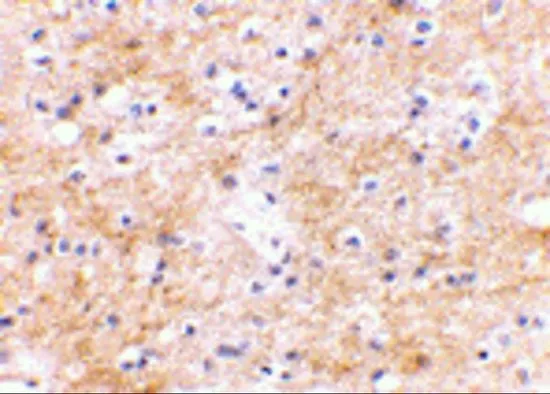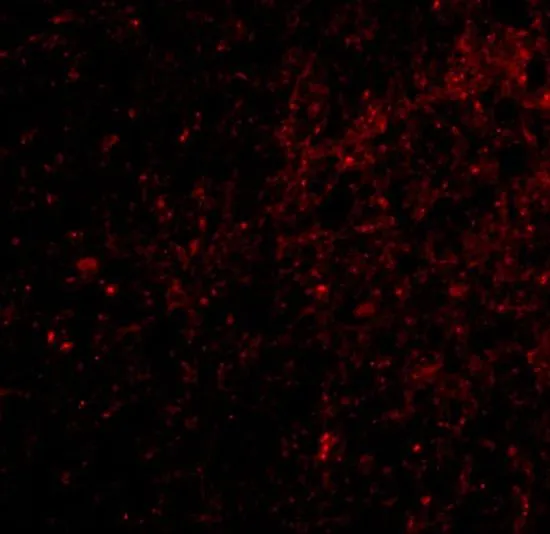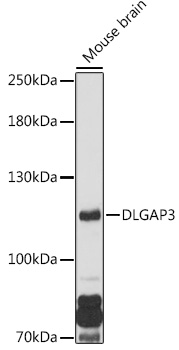
IHC-P analysis of human brain tissue using GTX85421 SAPAP3 antibody. Working concentration : 2.5 microg/ml
SAPAP3 antibody
GTX85421
ApplicationsWestern Blot, ELISA, ImmunoHistoChemistry, ImmunoHistoChemistry Paraffin
Product group Antibodies
TargetDLGAP3
Overview
- SupplierGeneTex
- Product NameSAPAP3 antibody
- Delivery Days Customer9
- Application Supplier NoteWB: 1 microg/mL. IHC-P: 2.5 microg/mL. *Optimal dilutions/concentrations should be determined by the researcher.Not tested in other applications.
- ApplicationsWestern Blot, ELISA, ImmunoHistoChemistry, ImmunoHistoChemistry Paraffin
- CertificationResearch Use Only
- ClonalityPolyclonal
- Concentration1 mg/ml
- ConjugateUnconjugated
- Gene ID58512
- Target nameDLGAP3
- Target descriptionDLG associated protein 3
- Target synonymsDAP3, SAPAP3, SPAPA3, disks large-associated protein 3, DAP-3, PSD-95/SAP90-binding protein 3, SAP90/PSD-95-associated protein 3, discs large homolog associated protein 3
- HostRabbit
- IsotypeIgG
- Protein IDO95886
- Protein NameDisks large-associated protein 3
- Scientific DescriptionSAP90/PSD-95-associated protein 3 (SAPAP3, also known as DLGAP3) is a member of a protein family whose members specifically interact with PSD-95/SAP90, a membrane-associated guanylate kinase localized at postsynaptic density (PSD) in neuronal cells. Like the other SAPAP proteins, SAPAP3 is thought to be an adaptor protein that also interacts with different synaptic scaffolding proteins, cytoskeletal and signaling components, such as focal adhesion kinase (FAK) and proline-rich tyrosine kinase 2 (PYK2). Both SAPAP3 protein and mRNA are targeted to dendrites, whereas SAPAP1, -2, and -4 mRNAs are detected mainly in cell bodies. Recent experiments have suggested that SAPAP3 may be involved in obsessive-compulsive disorder (OCD), as mice lacking SAPAP3 exhibited OCD-like symptoms which could be relieved by lentiviral-mediated selective expression of SAPAP3 in the striatum of SAPAP3-mutant mice. At least two isoforms are known to exist.
- Storage Instruction-20°C or -80°C,2°C to 8°C
- UNSPSC12352203






